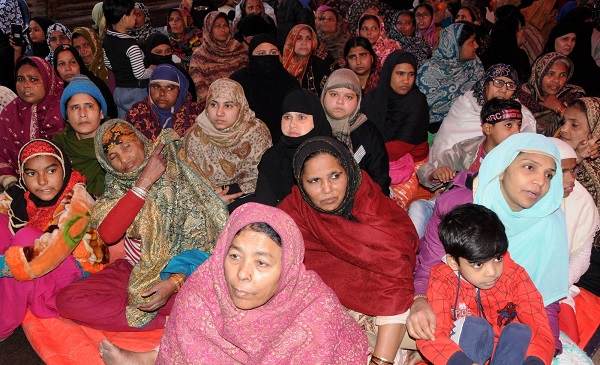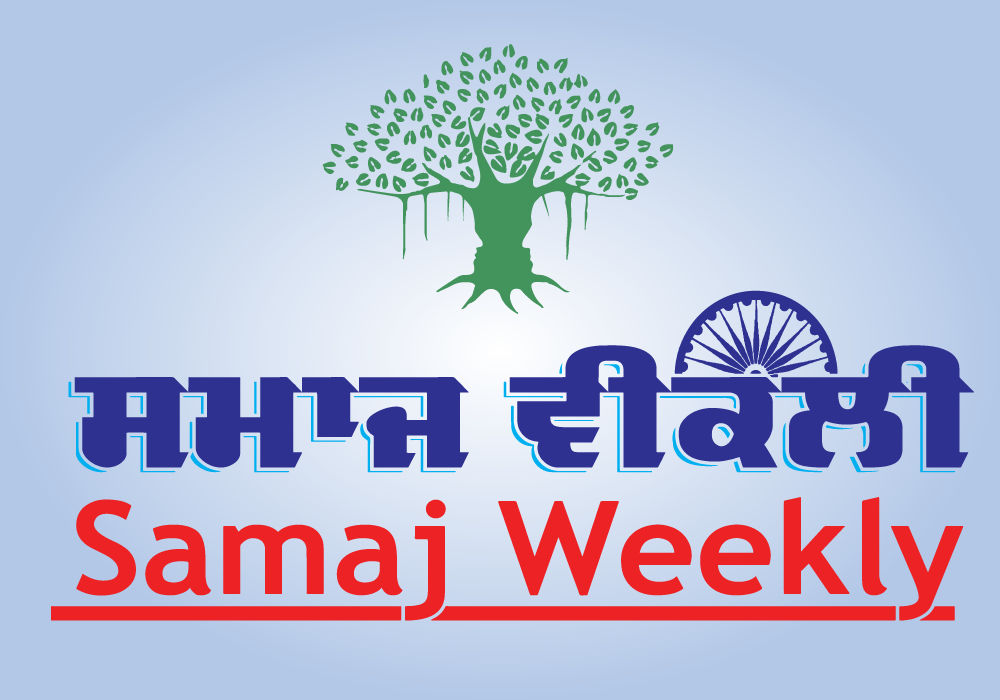
New Delhi, Never has any road in the history of electoral politics became so central as has Road No 13A connecting Delhi’s Sarita Vihar and Badarpur with Noida, passing through Shaheen Bagh in Delhi.
It has been 51 days since the locals shut their businesses and took over the road and vandalised signages to register their protest against the contentious Citizenship (Amendment) Act, which grants Indian citizenship to non-Muslims facing religious persecution in three neighbouring countries — Pakistan, Afghanistan and Bangladesh.
Though a largely non-violent movement, the Shaheen Bagh blockade for 51 days has inconvenienced many adjoining areas, creating a perception that is not worth flaunting, thanks to its former organiser Sharjeel Islam demanding Assam be cut off from the rest of India.
Interestingly, in the four Assembly constituencies that border Okhla — where Shaheen Bagh is located — are overwhelmingly polarised and angry.
Their anger is less at the blockade and more at the brouhaha around it that finds a shrill manifestation on social media.
Okhla shares its border with Badarpur, Tughlaqabad, Kalkaji and Trilokpuri. None of the four were won by the BJP. Amid the AAP storm, BJP was reduced to just three members in the last Assembly.
The Shaheen Bagh blockade is about to complete two months, and the anger is palpable and the frustration visible.
Mid January, a large number of residents of upscale Sarita Vihar, which falls under the Badarpur Assembly constituency, had staged a protest demanding that the Shaheen Bagh blockade be cleared.
Many held the tricolour in hand and shouted slogans, but to no avail.
“Traffic Alert: Road No. 13A between Mathura Road and Kalindi Kunj is closed for traffic movement. People coming from Noida are advised to take DND or Akshardham to reach Delhi,” this travel advisory has become a constant for those living around Shaheen Bagh.
With two random lone wolves’ attack at the protest site, more barricades have been put in place along with the deployment of more policemen.
Forget plying the arterial road, even to pass it, one needs to go through metal detectors and show identity cards. “As if its their private property,” said a man named Tyagiji, who was present in the latest counter-protest that was stopped by the Delhi Police and was detained just before Badarpur.
At least two residents of Sarita Vihar told IANS that Shaheen Bagh and its fallout is a recurring issue that comes up on their family WhatsApp groups, where there’s near unanimity that protesters are taking “undue advantage of being from the minority community.”
In another bordering Assembly constituency of Trilokpuri, the fear for law enforcement agencies are more tangible. The nondescript Delhi neighbourhood is much more than a congested resettlement colony.
It is a communal tinderbox that has seen multiple riots since 1984.
In 2014, a minor fist-fight during a ‘Maata ki chowki’ on the kind of music to be played turned into a communal clash in this East Delhi area. Delhi Police later found that the pot boiled so long due to fake news, old photos and rumours regularly passed on over community WhatsApp groups. At one point, all such WhatsApp groups had to be registered in 2014 to end the violence.
With the “us vs them” narrative taking a front seat, that fear is palpable in Trilokpuri where almost 20 per cent of the population are from the minority community.
A Trilokpuri elder told IANS on condition of anonymity that a highly objectionable meme involving a BJP Chief Minister has been doing the rounds on WhatsApp. He insisted that he came to know about it much later as he was not familiar with the technology and still uses a basic mobile phone.
According to him, the graphic meme was forced to be deleted before it took any communal hue.
“With statements like ‘goli maro salo ko’, many have found ways to express their discontent through such means. But we, the elders of all communities, need to be vigilant,” he said.
In Tughlaqabad, another bordering constituency, the BJP is betting big on local disenchantment with the anti-CAA protests. No wonder Yogi Adityanath mentioned it as “anarchy” and put the blame on the AAP government.
Adityanath held consecutive rallies in Badarpur and Tughlaqabad but reached late at both the venues by a couple of hours only to blame it on the traffic snarl caused by the Shaheen Bagh protest.
In both places, the somewhat irritated crowd forgot that they had waited for him for hours and burst into claps as soon as the UP Chief Minister flashed the Shaheen Bagh card.
Addressing the rally in Badarpur alongside Adityanath, BJP candidate Ramvir Bidhuri said, “Videos are being made of those sitting at Shaheen Bagh and after February, they will be treated the way Yogi’s government did in UP.”
It was the expression of the ‘silent anger’ that more than one BJP lawmaker has been talking about on Twitter.
When Adityanath said the Shaheen Bagh blockade is an “excuse” to “oppose the abrogation of Article 370, the clearing of the path for the construction of Ram Mandir and the Triple Talaq Bill,” he subtly connected the blockade with minorities.
Things are not much different in Kalkaji, a south Delhi constituency from where AAP’s Atishi Marlena is contesting.
IANS has reliably learnt that small clips of less than 30 seconds are doing the rounds across the constituency to make a case against Shaheen Bagh.
A political activist who has seen many such edited videos, told IANS on condition of anonymity: “The most forwarded video is Anuragji’s (Thakur). It’s a bumper hit.” Union Minister Thakur had recently said during an election rally in Delhi, “desh ke gadder ko” with the crowd chanting back “goli maaro saalo ko”.
“This election is being fought on WhatsApp,” the political activist said.
There are Facebook pages with more than a million subscribers who are using such videos to target the Shaheen Bagh protest.
Union Minister Ravi Shankar Prasad recently used a term that drew a lot of attention on social media: “silent majority” as against “few hundreds” at Shaheen Bagh.
AAP still has a significant edge and the BJP has failed to prop up a ‘vision’ for Delhi. But the ‘silent majority’ with an emotional victimhood in these four constituencies bordering Shaheen Bagh may end up making themselves electorally heard.
In either case, social harmony is a guaranteed casualty.
The 70-member Delhi Aseembly goes to the polls on February 8, while the results will be declared on February 11.









